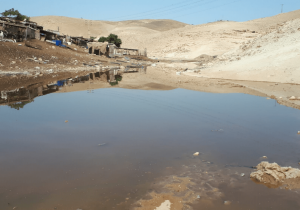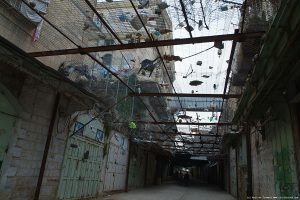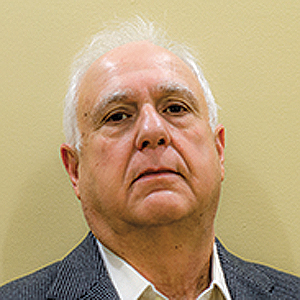In 1995, UNCTAD published “Environment and Development Prospects in the West Bank and Gaza Strip,”*1 an article that detailed various parameters that affect the environment in the Palestinian territories. This was the first visionary study that correlated the status of the environment with prospects of development. The study aimed to assist the PNA in understanding the environmental situation at the time and to create a development plan to tackle the various issues highlighted by the study. It was one of many studies that UN agencies commissioned in various sectors to help guide the PNA in its efforts to build a modern viable state. Unfortunately, the Oslo agreements were not applied by Israel, which spoiled much of the Palestinian plans to control the land and its resources, delegating much of the development activities to the overcrowded Area A that is under “full” Palestinian control. The 1995 UNCTAD study predicted this unfortunate situation that severely handicapped the Palestinians in their efforts to achieve their goal of building a modern state. These predictions may not have pleased many, but they were visionary and have proven to be correct.
The biggest problem lies in priorities: As in many developing countries, the environment takes second place to economic development. In Palestine, moreover, Israel as the occupying power plays a major role in decisions that deal with environmental issues, especially in the more than 60 percent of the country that is classified as Area C. This area could have been the breathing space for Palestine, providing room for the expansion of housing, industry, public parks, and environmentally protected areas. Instead, Area C has become the hub for Israeli settlement and industrial activities that proceed without much regard for the environment. Thus, what would have been wildlife refuges have been transformed into Israeli housing developments and industrial parks, crisscrossed by a network of roads − an enormous infrastructure that is necessary to provide the settlements with the required materials but which has a negative impact on the environment.*2 A simple drive through the West Bank is enough to convince even a casual observer of the severity of this situation. And the Palestinian Authority (PA) has been sidelined in any decision-making in Area C.
The areas under Palestinian control have been shrinking, which has placed a severe strain on housing, agriculture, and industrial development. Zoning laws have been scrambled in such a way that, frequently, residential areas are intermingled with industrial and commercial areas.
Let us now divide the environment into its various components and look at the current prospects of development for agriculture, waste management, and urban planning.

In the early 1980s, agriculture in Palestine was in a state of expansion and its prospects of development looked good. From the late 1980s onwards, however, agriculture has been taking a major downturn due to Israeli control of water resources that prioritizes the water supply of settlements and, with their expansion, has increasingly reduced water allocation for Palestinians. This practice, coupled with the ongoing confiscation of agricultural land in the West Bank − especially in the Jordan Valley, considered by many as the breadbasket of Palestine − has choked agriculture. Development in this sector has been depressed, and even though larger budgets have been allocated for this sector in order to improve agricultural production, these measures have not been sufficient under such difficult conditions. Nevertheless, agriculture remains a large contributor to GNP despite its shrinking role.
There have been important positive developments in the use of pesticides, thanks to better regulations, improved inspection, and, more importantly, increased awareness among the general population and the farming community in particular of the risks associated with the improper use of pesticides. In line with international regulations, the Palestinian Ministry of Agriculture strongly regulates which pesticides are allowed into the market. The list of permitted pesticides is updated regularly, and certain pesticides are either banned or their quantities and modes of use are highly regulated.
A number of plans to manage many types of waste that include sewage, solid waste, and industrial waste have been implemented by the PA with the generous help of donors. In a few success stories, sewage treatment plants have either been implemented or are in the process of being finished. The treatment of wastewater, however, remains an important issue to be tackled.
Solid waste management has witnessed success stories and setbacks. The management of solid waste requires the construction of sanitary landfills. But most potential locations for sanitary landfills are located in Area C, which is managed by Israel, and solid-waste disposal projects in this area require Israeli permission that has been difficult if not impossible to come by. The most extensive example is the German-funded Solid Waste Management project for the governorate of Ramallah. Tens of millions of Euros were spent on feasibility studies and planning, but eventually the project was rejected for multiple reasons. Israel insists that any such projects in Area C must receive their environmental approval. The Israeli government and the PA are in agreement that such projects must protect water resources and wildlife. But even when studies have been approved by the Palestinian side, Israel has always found a way to reject them. One sticking point is that Palestinians refuse to allow Israeli settlements to use such sites, as such permission would constitute an acknowledgement of the settlements which Palestinians, and the international community, consider illegal.*3 As a result, solid waste is poorly managed, with most localities resorting to the use of random unregulated dumps where the waste is burned, which causes untold damages to human health and the environment.
Water supply, sewage treatment, and solid waste management, as part of environmental management, have been sidelined − at the expense of environmental preservation.
Industrial waste and waste from workshops is poorly managed as well and frequently incinerated, emitting all sorts of toxic fumes and leaching into the environment. In order to comply with regulations for the environmental management of toxic waste, some of the industries send, or used to send, their waste to the waste treatment facility in the Negev. However, such attempts have faced major obstacles due to Israeli regulations that restrict the movement of waste from Palestine to Israel, the reluctance of specialized Israeli companies to handle waste that originates from Palestine, and the high fees they charge in cases when they do agree.

Regarding the vast topic of urban development, I shall highlight only a few points. Most municipalities have the proper regulations to control urban development because in the past few years, much attention has been given to this subject in workshops or through sponsored tours to foreign urban areas. There is now an improved understanding of how proper urban development can better serve the people. The pressures that are exerted on the municipalities by population growth and increasing urbanization, however, are tremendous and are forcing towns and cities to expand their boundaries − which cannot be done without Israeli approval. Thus, municipalities have to try to make the best of the areas they control, but they may not always be successful.
Regulating traffic, for example, is a nightmare in all urban areas. But we must take into consideration that not all land area is under Palestinian control, such as the case in Area C and to some extent also in Area B. And the tendency of some Palestinians to knowingly ignore regulations exasperates the situation in the localities where the fines are not sizable enough to serve as a deterrent.
Urban development in Palestinian areas within the so-called green line is no better. You cannot have proper development and preserve the environment under a brutal occupation that considers all of historical Palestine and beyond to be the land of Israel, gifted by God, but at the expense of the local populations, historically and today.
Unfortunately, the final victim of development policies is frequently the environment, with all the negative consequences that follow and that are becoming increasingly evident: Polluted water resources and drying aquifers, streams, rivers, and lakes. Air pollution is increasing in Palestinian urban areas – and imported from the large cities in Israel’s coastal region due to the prevailing western winds. And what about nuclear waste? I leave it to readers to use their imagination to respond to that question. Is it not public knowledge whether it is secretly dumped in Palestine or Israel? Or is it clandestinely being exported?
*1 Ramzi Sansur, “Environment and Development Prospects in the West Bank and Gaza Strip,” UNCTAD/ECDC/SEU/8, April 1995, available at https://unctad.org/en/Docs/poecdcseud8.en.pdf.
*2 Whereas cars and lorries with yellow Israeli plates can cross checkpoints with ease, transportation for Palestinian companies frequently faces obstacles through checkpoints and roads they may not use, forcing them to be prepared for long delays or alternate routes.
*3 UN Office of the High Commissioner of Human Rights, Israeli settlements in the Occupied Palestinian Territory including East Jerusalem, and the occupied Syrian Golan, October 2016, available at https://www.ohchr.org/Documents/Countries/PS/SG_Report_on_Israeli_A.71.355.pdf.


